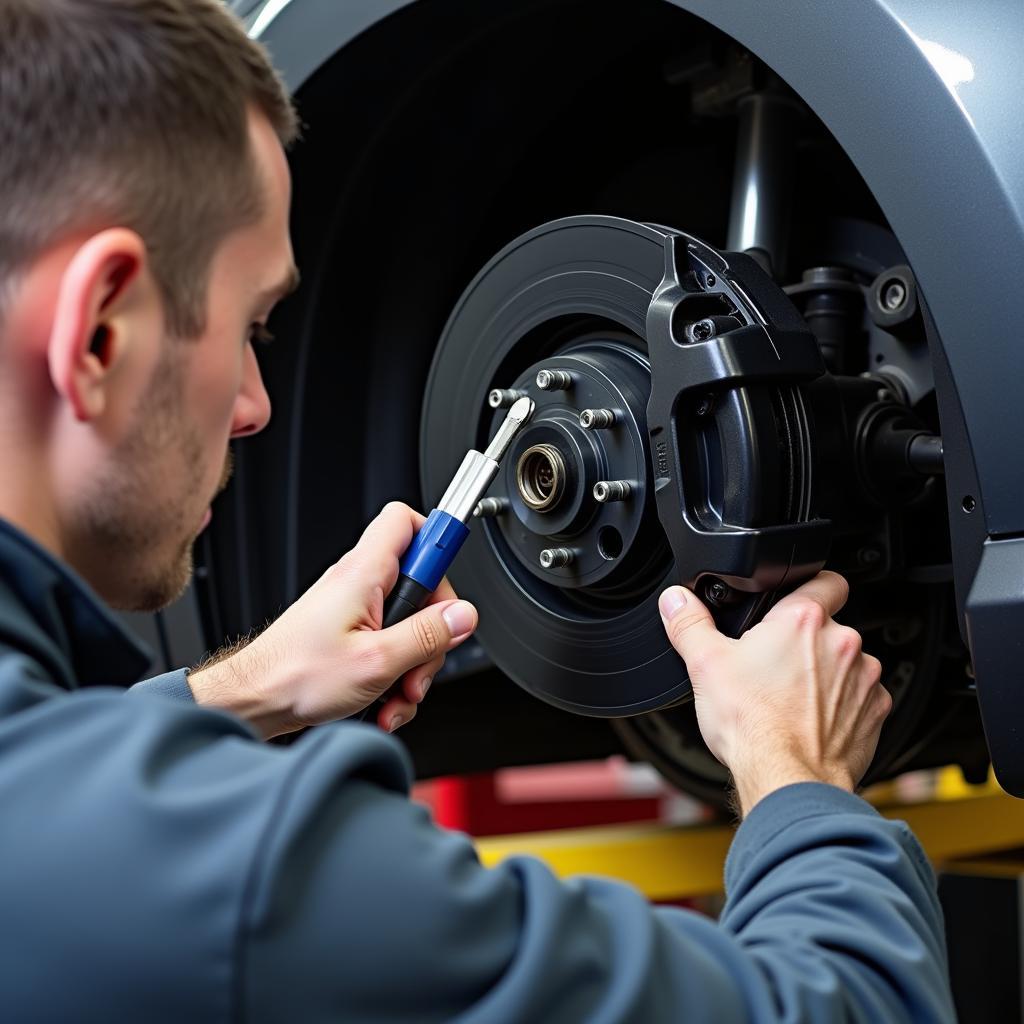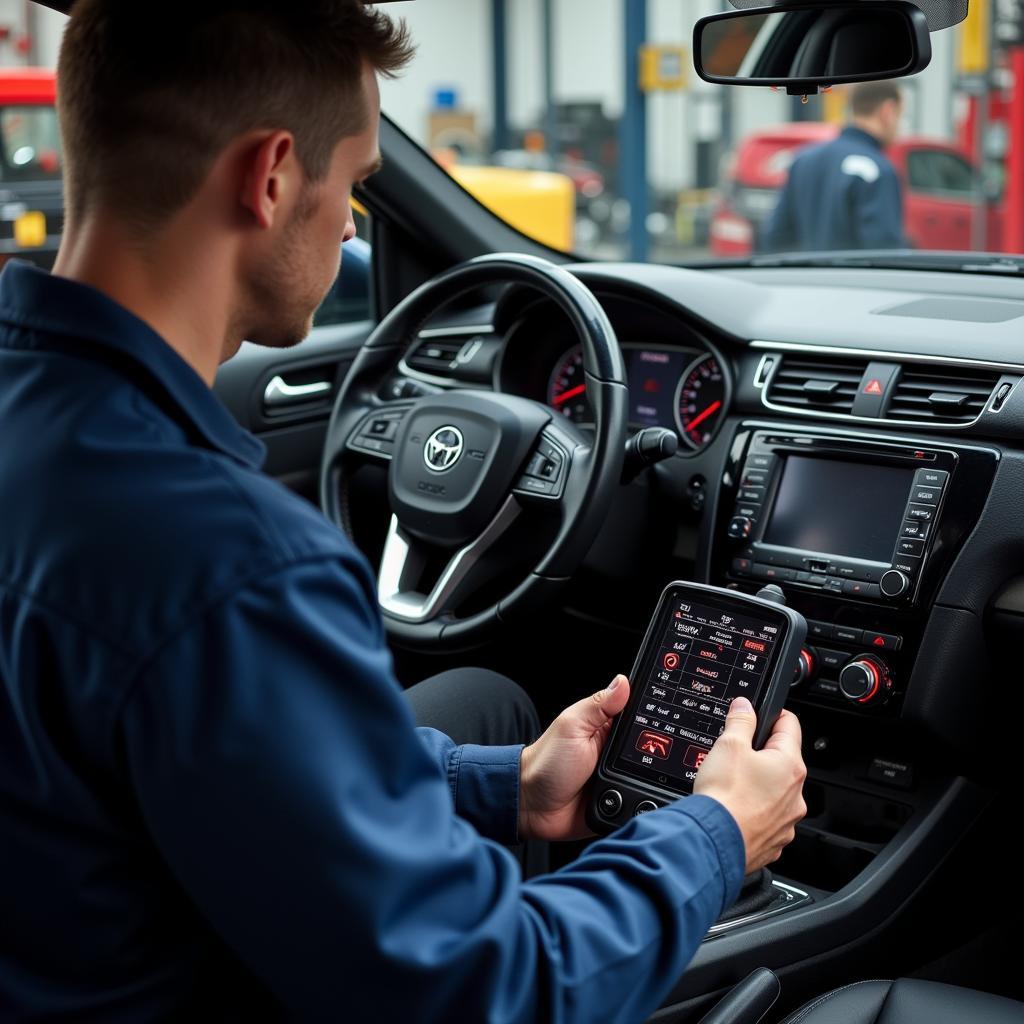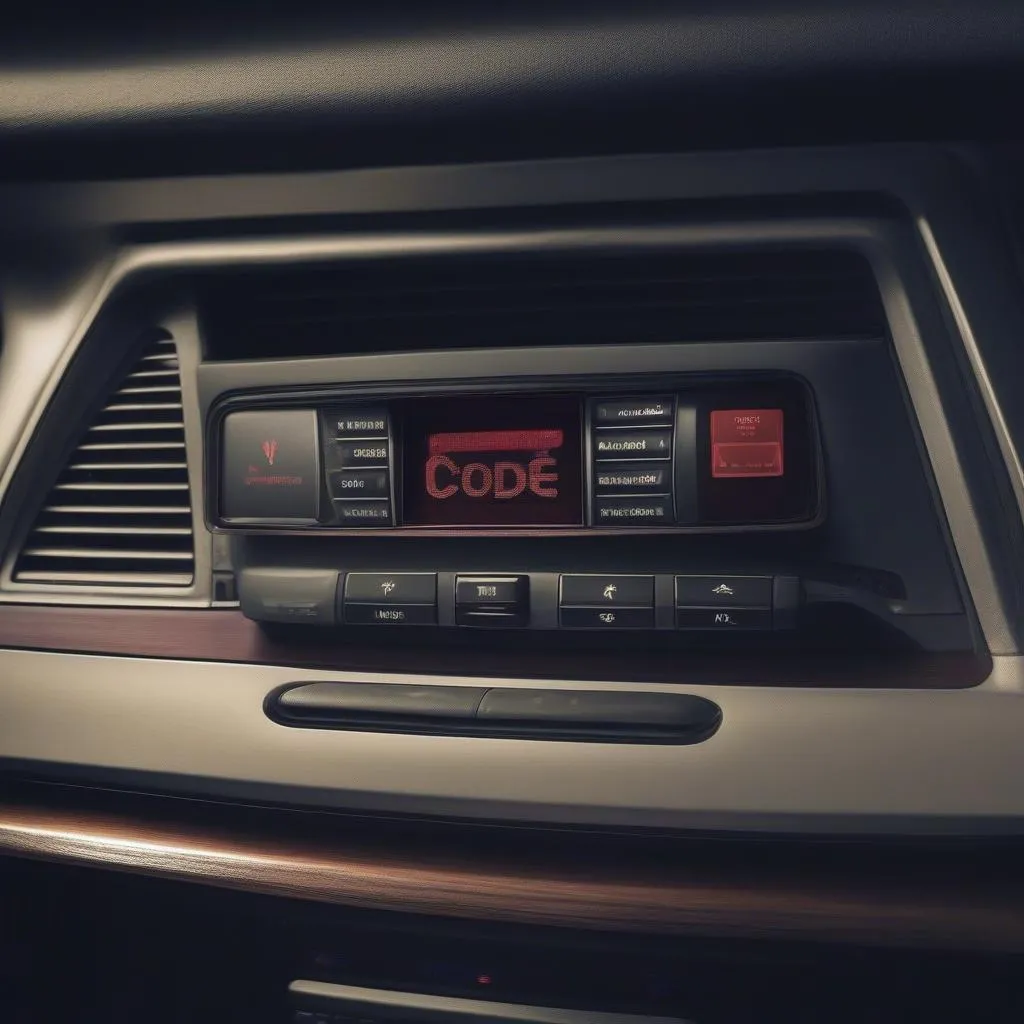The brake warning light on your Renault Megane dashboard is a crucial safety feature. When illuminated, it signals a potential problem with your braking system that requires immediate attention. Ignoring this warning light could lead to brake failure, putting you and other road users at risk. This comprehensive guide will delve into the common causes of the Renault Megane brake warning light, how to diagnose the issue, and the necessary steps to rectify it.
Understanding the Renault Megane Brake Warning Light
The brake warning light, typically a red circle with an exclamation mark or the word “BRAKE” inscribed, is designed to alert you about various braking system malfunctions. It can illuminate for several reasons, ranging from simple issues like low brake fluid to more complex problems like a faulty ABS module.
Common Causes of a Renault Megane Brake Warning Light
Several factors can trigger the brake warning light on your Renault Megane. Here are some of the most prevalent causes:
-
Low Brake Fluid: This is the most common culprit behind the illuminated brake warning light. Brake fluid is essential for transmitting force from the brake pedal to the brake calipers, ultimately stopping your vehicle. As brake pads wear down, the brake fluid level naturally decreases. However, a sudden drop in brake fluid level often indicates a leak, requiring immediate inspection and repair.
-
Worn Brake Pads: Brake pads are designed to wear down over time. Once they reach a certain level of wear, the brake warning light will illuminate to signal replacement is needed. Continuing to drive with worn brake pads not only compromises your safety but can also damage the brake rotors.
-
Faulty Brake Light Switch: The brake light switch, located behind the brake pedal, activates your brake lights when you press the pedal. If this switch malfunctions, your brake lights may not function correctly, and the brake warning light may illuminate.
-
ABS Issues: The Anti-lock Braking System (ABS) prevents wheel lockup during hard braking, enhancing vehicle control. If a problem arises within the ABS system, such as a faulty sensor or control module, the brake warning light might illuminate along with the ABS warning light.
-
Faulty Brake Caliper or Wheel Cylinder: The brake caliper houses the brake pads and piston, while the wheel cylinder (in drum brakes) pushes the brake shoes against the drum. If either of these components malfunctions, it can trigger the brake warning light.
-
Hydraulic System Problems: Leaks or blockages within the brake lines, hoses, or master cylinder can disrupt the hydraulic pressure required for braking, potentially triggering the brake warning light.
Diagnosing the Problem
When the brake warning light comes on in your Renault Megane, it’s crucial to diagnose the root cause promptly. Here are some steps to help you identify the issue:
-
Check the Brake Fluid Level: Park your car on a level surface and locate the brake fluid reservoir under the hood. The reservoir will typically have a “DOT” marking. Check the fluid level against the minimum and maximum markers. If the fluid level is low, it needs to be topped up. However, be sure to inspect for any visible leaks in the brake lines and hoses.
-
Inspect the Brake Pads: If the brake fluid level is adequate, visually inspect the brake pads through the wheel spokes. If the pads are thin or worn down to the metal backing plate, they need to be replaced.
-
Check for Leaks: Examine the brake lines, hoses, and components for any signs of fluid leaks. Look for wet spots, drips, or puddles of brake fluid. Any leaks in the braking system require immediate professional attention.
 Renault Megane Worn Brake Pads
Renault Megane Worn Brake Pads
-
Listen for Unusual Noises: When applying the brakes, pay attention to any unusual noises like grinding, squealing, or scraping. These sounds often indicate worn brake pads or a problem with the brake calipers.
-
Check the Parking Brake: Ensure that the parking brake is fully released. If it is even slightly engaged, it can cause the brake warning light to come on.
Seeking Professional Help
If you’ve exhausted the basic troubleshooting steps and are still unable to pinpoint the cause of the brake warning light, it’s time to seek professional assistance. A qualified mechanic with experience in Renault vehicles can accurately diagnose the issue using specialized diagnostic tools and recommend the necessary repairs.
Expert Insight: “Attempting to diagnose and repair complex brake system problems without the proper knowledge and tools can be dangerous,” warns John Miller, a certified Renault technician with over 15 years of experience. “It’s always best to err on the side of caution and seek professional help when dealing with brake issues.”
Preventative Maintenance for Optimal Brake Health
Regular preventative maintenance is paramount to ensure optimal brake performance and longevity. Here are some essential tips:
-
Regular Brake Inspections: Inspect your brakes at least once a year or every 12,000 miles. Professional mechanics can thoroughly check the entire brake system, including pads, rotors, calipers, hoses, and fluid levels.
-
Timely Brake Fluid Flushes: Brake fluid is hygroscopic, meaning it absorbs moisture over time, which can degrade its performance. Flush your brake fluid every two years or as recommended by your Renault’s service schedule.
-
Quality Brake Pads and Rotors: When replacing brake pads and rotors, always choose high-quality parts that meet or exceed OEM specifications.
-
Avoid Riding the Brakes: Prolonged or excessive braking can overheat the brakes, leading to premature wear. Maintain a safe following distance and anticipate stops to avoid unnecessary braking.
 Renault Megane Brake Inspection
Renault Megane Brake Inspection
Conclusion
The brake warning light in your Renault Megane serves as a critical safety alert, demanding immediate attention. Understanding the common causes of this warning light and following the diagnostic steps outlined above can help you address the issue promptly and ensure your safety on the road. Remember, when it comes to brakes, it’s always best to err on the side of caution and seek professional help if you’re unsure about any aspect of diagnosis or repair.


